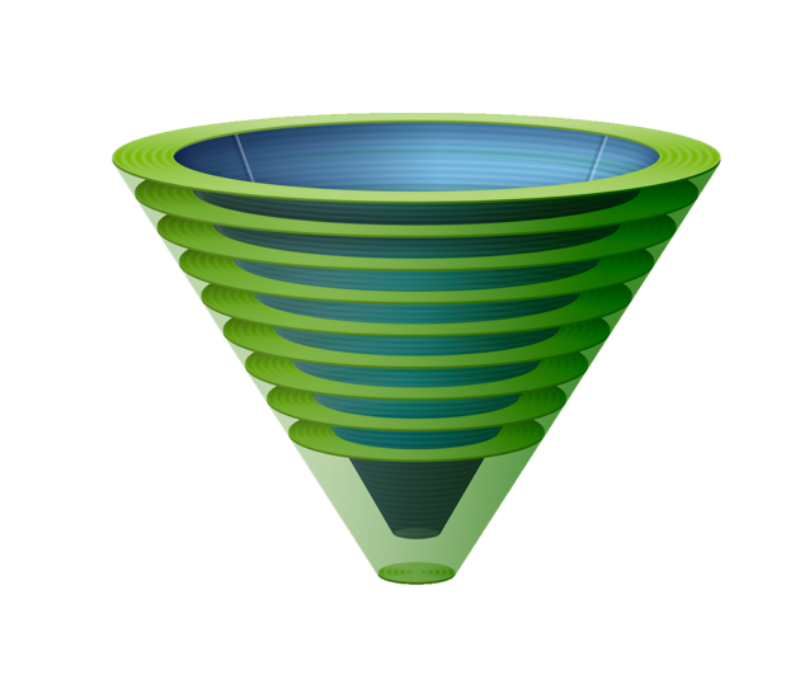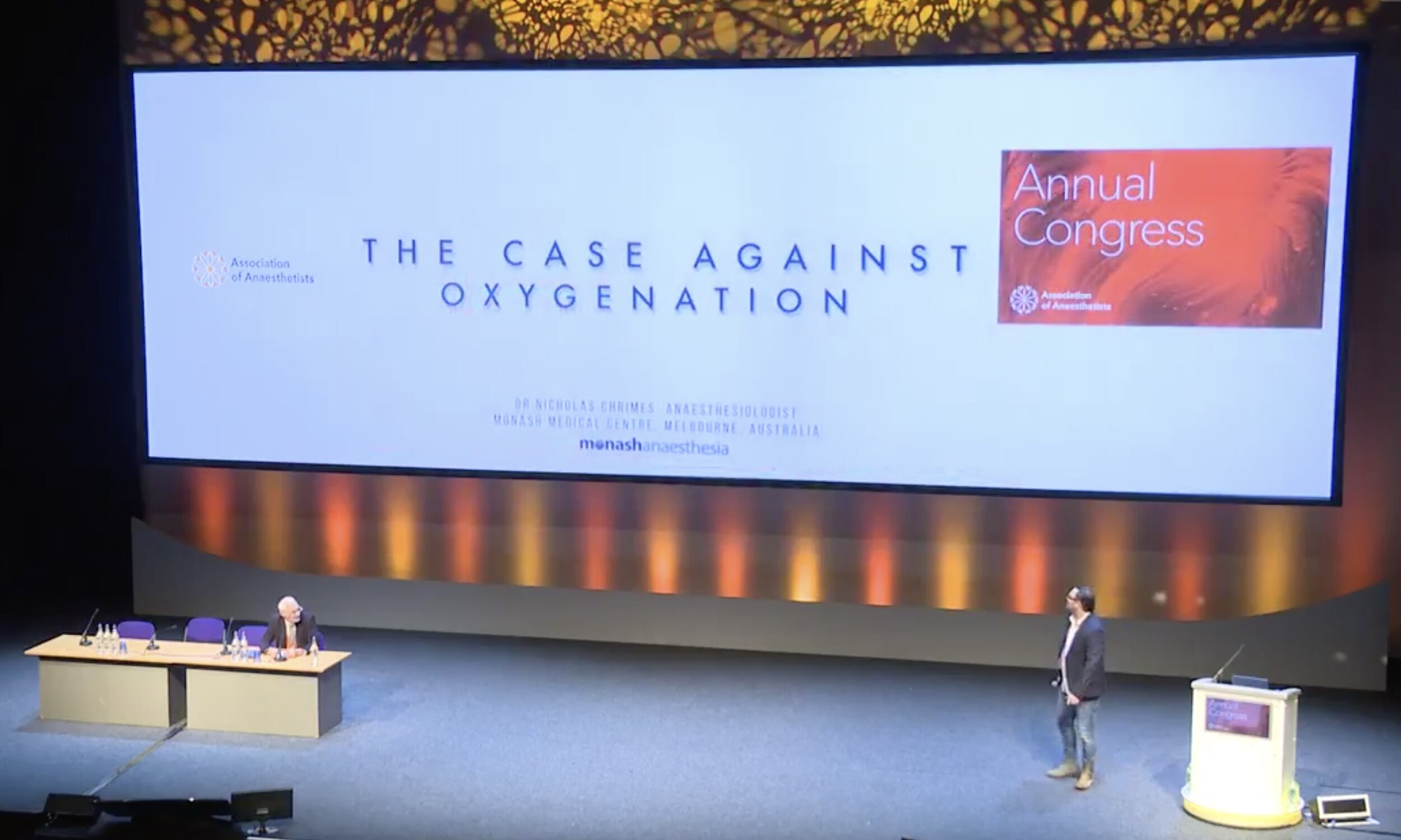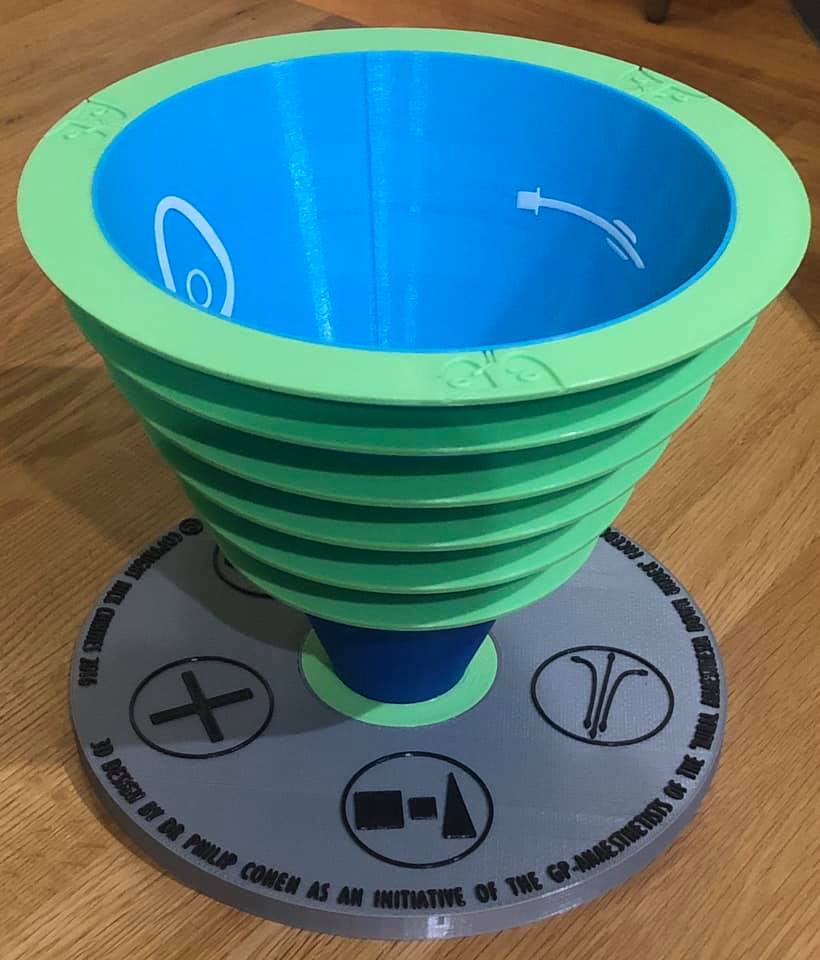In 2016 the British Journal of Anaesthesia published a special article on the Vortex Approach
“The Case Against Oxygenation”
Click on the image to the right to view the video of Vortex Approach creator Nicholas Chrimes’ presentation on the use of critical language for communicating whether or not airway interventions have been successful.
From the 2019 AAGBI Annual Congress in Glasgow.
introduction
While technical competence and adequate planning are crucial to effective airway management, it is well recognised that even well prepared airway clinicians can sometimes fail to perform basic interventions under stress.
The major airway algorithms are valuable training tools to familiarise clinicians with an approach to emergency airway management prior to the occurrence of an airway crisis. They are not, however, usually presented in a format that makes their content readily accessible in real-time to teams of potentially highly stressed clinicians during the process of managing a challenging airway. In addition they typically provide guidance which is predominantly directed at anaesthetists and is usually restricted to the circumstance where the primary plan for airway management is endotracheal intubation.
The Vortex Approach, in contrast, is based around a “high acuity implementation tool”, specifically designed to be used during the high-stakes, time critical situation of an evolving airway emergency. It is intended to help clinical teams perform under pressure by providing a simple, consistent template that can be taught to all clinicians involved in advanced airway management, irrespective of critical care discipline and whether they are from a medical, nursing or paramedical background. It is also able to be used in any context in which an airway management takes place.
overview
The Vortex implementation tool is based on the premise that there are only three upper airway 'lifelines' (non-surgical techniques) by which alveolar oxygen delivery can be established and confirmed: face mask, supraglottic airway and endotracheal tube. If a 'best effort' at each of these three lifelines is unsuccessful then a can't intubate, can't oxygenate situation (CICO) situation exists and 'Neck Rescue' (emergency front-of-neck access) must be initiated.
Completion of a 'best effort' at any of the three upper airway lifelines without being able to restore alveolar oxygen delivery mandates spiral movement inward towards the next lifeline. The circular arrangement of the three lifelines on the tool means that airway management can be initiated using any lifeline and proceed to the remaining ones in whatever sequence is judged most appropriate in the clinical circumstances. A list of five categories of optimisation, applying equally to each of the three lifelines, is provided to prompt consideration of the available options for maximising success during a best effort at any lifeline.
Completion of best efforts at all three lifelines without restoring alveolar oxygen delivery culminates in spiral movement to the centre zone of the tool, representing the need to initiate Neck Rescue. Conversely, confirmation of alveolar oxygen delivery using any of the three lifelines, results in outward movement into the circumferential 'Green Zone'. The Green Zone prompts recognition of the opportunity to re-oxygenate, gather resources and develop a strategy, that arises whenever alveolar oxygen delivery is able to be established. The Green Zone is also visible in the centre of the tool to remind clinicians that, when all three lifelines have been unsuccessful, Neck Rescue also restores alveolar oxygen delivery and provides the same opportunities.
conceptual imprinting
The circular graphic on the Vortex tool is intended to represent looking down into a funnel as illustrated in the lateral, three dimensional image of the Vortex. This three dimensional depiction of the Vortex is not intended to be referred to during an airway crisis but is used during training to convey and promote retention of additional concepts relating to airway management - a process described as 'conceptual imprinting'. The Vortex implementation tool is then able to evoke recall of these imprinted concepts without specific reference being made to them, allowing it to maintain a simple, low content interface.
Lateral 3-dimensional view of Vortex demonstrating funnel concept.
The narrowing of the funnel represents the decreased time and options available with spiral descent deeper into the Vortex. The darker blue at the centre of the funnel evokes recognition of the potential for worsening hypoxaemia and cyanosis if alveolar oxygen delivery is not restored. The sloping surface of the interior of the funnel emphasises that this is an unstable situation and reinforces the need to keep moving forward with attempts to efficiently establish alveolar oxygen delivery via one of the lifelines to avoid a deterioration in tissue oxygenation. In contrast the horizontal surfaces which make up the surrounding Green Zone serve to remind that whenever alveolar oxygen delivery is achieved. the imminent risk of hypoxaemia has been arrested. The patient is then in a situation of relative safety and of the opportunity exists to pause, optimise and plan.
THE VORTEX APPROACH
The Vortex implementation tool is the core of the broader Vortex Approach which provides a comprehensive array of resources to facilitate all phases of airway advanced airway care including airway assessment, development of an airway strategy and performance of airway interventions in both the routine and emergency setting. The focus of the Vortex Approach is on providing "implementation tools" for real-time use during the process of airway management. In addition it provides "foundation resources", to be referred to prior to undertaking airway management, that teach clinical teams how to use to use the Vortex Approach.
Implementation Tools: the Vortex Approach incorporates a suite of implementation tools designed to facilitate both the preparation and intervention phases of advanced airway care. These aim to present information in a manner that is simple enough to be accessible to teams during clinical practice. These adjunctive tools work in an integrated fashion with the primary Vortex tool using the same concepts and language.
Foundation Resources for the Vortex Approach: "implementation" tools will not be effective without prior familiarity and training to lay a foundation for their use. The Vortex Approach therefore provides a number of "foundation" resources that establish understanding of the background principle specific to the Vortex Approach and proficiency in the team behaviours required for its successful implementation.
Technical Foundation Material: effective airway management requires that clinicians have a foundation in the requisite technical knowledge, skills and attitudes that make them competent to make appropriate decisions in response to the prompts provided by the Vortex and implement the chosen interventions. Although the resources of the Vortex Approach provide a limited amount of technical material, the bulk of this technical content should be derived from other recognised airway management resources and formal airway training programs. The Vortex Approach then provides a template to prompt team recall and application of this technical background material in real-time. Thus the Vortex Approach should not be viewed as an alternative to the major airway algorithms but as a complementary resource, designed to facilitate implementation of the management recommendations outlined by these training tools and improve the performance of clinical teams.
The Vortex serves to maximise opportunities to establish alveolar oxygen delivery by:
Facilitating effective planning for airway managment
Facilitating efficient best efforts at each of the three upper airway lifelines.
Encouraging appropriate decision making when any of these are successful and the Green Zone is entered.
Promoting early priming for Neck Rescue as an airway crisis evolves.
Facilitating rapid recognition of the need for CICO Rescue.
Vortex 3D Model created by Dr Philip Cohen
THe VORTEX AIRWAY RESCUE CART
Click the 'Airway Cart' icon above for more information.
How does the vortex approach differ from other airway management resources?
The elaine bromiley Case
This real time reconstruction of an actual case demonstrates how human factors can impact on the performance of experienced clinicians and highlights some of the key issues that the Vortex Approach is designed to address.









